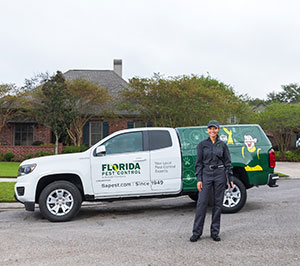Bed Insect Therapy Failure: Comparing Chemical Vs. Non-Chemical Solutions
In the realm of insect control, specifically when dealing with the consistent concern of bed insects, the option in between chemical and non-chemical therapy solutions can be an essential one. Both approaches provide unique benefits and drawbacks, affecting aspects such as performance, safety and security considerations, and general price. By examining the nuanced details of each method, a clearer understanding of which path to pursue in dealing with a bed insect invasion can be attained.
Efficiency of Chemical Treatments
Chemical therapies for bed bug infestations have actually been widely identified for their potent and rapid effectiveness in eliminating these insects. When thinking about the effectiveness of chemical therapies, it is important to recognize that they can provide a fast and complete service to a bed bug trouble.
Furthermore, chemical therapies have the advantage of using residual impacts, meaning that they can remain to remove bed insects also after the initial application. This recurring activity is especially beneficial in combating any potential re-infestations. Additionally, the quick action of chemical therapies can bring relief to individuals dealing with serious bed bug invasions, permitting them to restore control of their home quickly.
Safety Concerns With Chemical Solutions
One essential facet that needs careful consideration when using chemical solutions for bed pest treatment is making certain the safety and security of residents and the setting. Exposure to specific chemicals utilized in bed bug therapies can lead to respiratory problems, skin irritability, or various other negative responses, especially in people with pre-existing conditions or level of sensitivities.
Furthermore, the ecological impact of chemical services is another considerable factor to consider. Some pesticides utilized in bed insect treatments might be harmful to helpful pests, wild animals, and ecosystems if they seep right into the soil or water systems. It is necessary to make use of chemical therapies judiciously, complying with security standards, and taking into consideration much less poisonous alternatives to reduce these risks and ensure the efficient and risk-free management of bed insect problems.
Advantages of Non-Chemical Strategies
Thinking about the prospective safety and security worries and environmental influence associated with chemical remedies for bed insect treatment, checking out non-chemical methods presents an encouraging option with a number of distinctive benefits. Non-chemical therapies are ecologically pleasant, as they do not contribute to air or water air pollution, making them a sustainable selection for insect control.
Additionally, non-chemical options can be effective in targeting bed bugs, consisting of hard-to-reach areas where chemical therapies may not permeate. Approaches such as heat therapy, vacuuming, steam cleaning, and cushion encasements offer complete obliteration without making use of hazardous chemicals. Furthermore, non-chemical techniques can be much less disruptive, needing very little preparation and home pest control service permitting quicker reentry right into dealt with areas. Generally, choosing non-chemical bed insect therapy approaches not only focuses on safety and environmental management but also guarantees effective and thorough insect control.
Limitations of Non-Chemical Treatments

Additionally, non-chemical treatments commonly call for multiple applications to accomplish effective obliteration. This can be time-consuming and may not always guarantee complete elimination of all bed insects and their eggs, especially in hard-to-reach or surprise places.
Moreover, the success of non-chemical therapies greatly relies upon appropriate execution and thoroughness, which can be challenging for individuals without professional experience. Insufficient application of non-chemical approaches might cause insufficient obliteration, causing relentless problems and the demand for added therapies.
Therefore, while non-chemical therapies have their benefits, it is crucial to recognize these constraints and consider them when establishing the most efficient technique for handling bed bug infestations.
Cost Comparison: Chemical Vs. Non-Chemical Options
Given the limitations connected with non-chemical therapies, an essential facet to review in the context of bed insect administration is the cost comparison between chemical and non-chemical choices. Chemical treatments normally include the application of insecticides by specialists, which can vary from $250 to $900 per space, depending on the extent of the infestation and the dimension of the location to be treated. In contrast, non-chemical therapies like warm therapy or steam can be more costly, with costs varying from $1,000 to $6,000 for an entire home. While the initial expense of chemical lepest c treatments might seem lower, multiple therapies may be required to completely eliminate the invasion, potentially raising the general price. On the other hand, non-chemical choices may give a more environment-friendly and sustainable remedy, although they can be cost-prohibitive for some individuals. Inevitably, when taking into consideration the cost of bed insect therapy choices, it is very important to evaluate the ahead of time expenses versus the effectiveness and long-lasting sustainability of the picked method.
Conclusion

Thinking about the possible safety issues and environmental effect connected with chemical options for bed pest therapy, exploring non-chemical methods provides an encouraging choice with several distinct benefits.Provided the restrictions linked with non-chemical therapies, an important element to examine in the context of bed insect administration is the cost contrast in between chemical and non-chemical alternatives. In comparison, non-chemical therapies like warmth therapy or heavy steam can be a lot more pricey, with prices ranging from $1,000 to $6,000 for an entire home. While the preliminary expense of chemical treatments may seem reduced, multiple treatments might be called for to totally get rid of the problem, possibly boosting the general expense.In final thought, when comparing chemical and non-chemical bed pest therapy alternatives, it is important to consider performance, safety and security, advantages, restrictions, and expense.
Comments on “Reliable A1 Bed Bug Treatment in Charlotte - Safe and Proven Approaches”